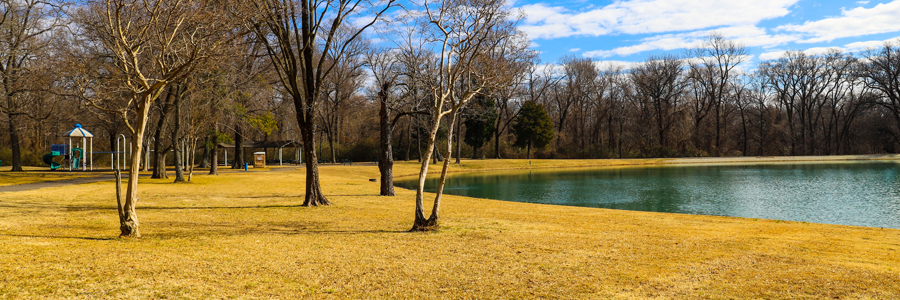
Drought doesn’t just happen during the hot days of Summer. Drought conditions can also happen in Winter. Winter drought can be worse and cause more damage than in Summer because watering is often neglected, with irrigation systems turned off until Spring. It takes about 10-13 inches of snow to equal an inch of rain. In some regions where it gets extremely cold, it can take up to 50 inches of snow to make an inch of water. Without snow cover, soil dries out quickly.
When the soil is dry, frost can penetrate deep beneath the ground surface. This results in frost heaving, when dry soils push perennials, shrubs and trees out of ground, exposing roots. Since landscapes are rarely checked in Winter months, plant damage often goes unseen, becoming irreversible by the time it’s discovered in the Spring.
Winter drought effects can be quite severe, leaving trees and plants highly stressed. Pine needles turn brown and fall off, plant leaves curl up and drop off, and plant roots beneath the frozen ground surface dry out, because they can’t absorb needed moisture from soil. Lack of water also allows harmful insects and disease to attack stressed trees and plants, worsening the situation, because drought has also reduced good insect populations that feed on mites and aphids.
To prevent drought damage after the irrigation system has been turned off for Winter, plants and trees should be watered by hand at least once or twice a month. Spreading a deep layer of organic mulch around plants and trees will help retain soil moisture beneath the ground surface. Mulch should be applied about 2-3 inches deep around shrubs and trees, extending about 18-24 inches away from trunk. Drought-resistant perennials need about 2-3 inches of mulch, extending about 12 inches from the crown. Mulch should never be piled up against the crown of plants or the trunks of shrubs and trees.
Watering should only be done when the ground is not frozen and daytime temps are above 40 degrees. Soil moisture in the root zones of plants and trees can be checked with a probe or screwdriver. Watering isn’t necessary if the probe penetrates the soil easily. Drought-resistant perennials should get about a gallon of water per foot of the plant. Trees need about 10 gallons of water per inch diameter, applied on all sides.
Once Winter thaws into Springtime, and the irrigation system is turned back on, soil moisture can easily be checked and monitored with Soil Moisture Sensors. Buried deep in the root zone of plants, these ultra-sensitive sensors can read soil moisture content to within + 3 percent, and electronically transmit readings to the Smart Controller exactly how much moisture is needed in each zone to maintain plant health.
Drought can happen any time of year, anywhere there is no snowfall or rainfall for extended periods of time. A little hand-watering once or twice a month until the irrigation system can be turned back on in the Spring will help prevent irreversible plant and root damage that can go unseen all Winter.

